Requirements and Realities of REDD+ Implementation in Nigeria
Article Information
Udeme Olayinka Olaniyan1*, Paul Dargusch1, David Wadley1
1School of Earth and Environmental Science, Faculty of Science, The University of Queensland, Brisbane, Australia
*Corresponding Author: Udeme Olayinka Olaniyan, School of Earth and Environmental Science, Faculty of Science, The University of Queensland, Brisbane, Australia
Received: 16 February 2021; Accepted: 22 February 2021; Published: 27 February 2021
Citation:
Udeme Olayinka Olaniyan, Paul Dargusch, David Wadley. Requirements and Realities of REDD+ Implementation in Nigeria. Journal of Environmental Science and Public Health 5 (2021): 99-113.
View / Download Pdf Share at FacebookAbstract
Graphical Abstract
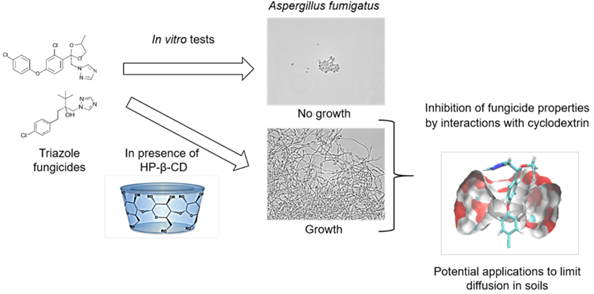
Negotiations and decisions of the 2007 and 2010 Conference of the Parties (COP) sessions at Bali and Cancun enabled participants to develop pilot projects leading into a national strategy on Reducing Emissions from Deforestation and Forest Degradation (REDD+) ‘Readiness’. REDD+ provides incentives for countries to receive payments for restraining greenhouse gas emissions through forest conservation, sustainable forest management and enhancement of forest carbon stocks. The overarching Warsaw Framework on REDD+ set at COP19 in 2013 provided guidelines for how countries can work towards eligibility for results-based payments for carbon savings from REDD+. It included seven points covering governance issues, approaches to reference emissions level estimation, forest inventory and reporting obligations. In this paper we examine the case of REDD+ in Nigeria by assessing how effectively that nation has implemented the Warsaw Framework requirements. We determine that the country’s over-ambitious political motivation for REDD+ affected not only the practical design of its National Strategy but also distracted management from establishing adequate safeguards for the program. Lack of capacity in advanced modeling hindered the establishment of the forest emissions reference level. That step was essential to enabling payments for reported and verified emission reduction outcomes. We reveal that national circumstances like forest governance, capacity, and political factors significantly influenced the effectiveness of pilot programs. From the Nigerian case, we maintain that effective REDD+
Deforestation articles Deforestation Research articles Deforestation review articles Deforestation PubMed articles Deforestation PubMed Central articles Deforestation 2023 articles Deforestation 2024 articles Deforestation Scopus articles Deforestation impact factor journals Deforestation Scopus journals Deforestation PubMed journals Deforestation medical journals Deforestation free journals Deforestation best journals Deforestation top journals Deforestation free medical journals Deforestation famous journals Deforestation Google Scholar indexed journals Forest Degradation articles Forest Degradation Research articles Forest Degradation review articles Forest Degradation PubMed articles Forest Degradation PubMed Central articles Forest Degradation 2023 articles Forest Degradation 2024 articles Forest Degradation Scopus articles Forest Degradation impact factor journals Forest Degradation Scopus journals Forest Degradation PubMed journals Forest Degradation medical journals Forest Degradation free journals Forest Degradation best journals Forest Degradation top journals Forest Degradation free medical journals Forest Degradation famous journals Forest Degradation Google Scholar indexed journals Reducing emissions articles Reducing emissions Research articles Reducing emissions review articles Reducing emissions PubMed articles Reducing emissions PubMed Central articles Reducing emissions 2023 articles Reducing emissions 2024 articles Reducing emissions Scopus articles Reducing emissions impact factor journals Reducing emissions Scopus journals Reducing emissions PubMed journals Reducing emissions medical journals Reducing emissions free journals Reducing emissions best journals Reducing emissions top journals Reducing emissions free medical journals Reducing emissions famous journals Reducing emissions Google Scholar indexed journals carbon stocks articles carbon stocks Research articles carbon stocks review articles carbon stocks PubMed articles carbon stocks PubMed Central articles carbon stocks 2023 articles carbon stocks 2024 articles carbon stocks Scopus articles carbon stocks impact factor journals carbon stocks Scopus journals carbon stocks PubMed journals carbon stocks medical journals carbon stocks free journals carbon stocks best journals carbon stocks top journals carbon stocks free medical journals carbon stocks famous journals carbon stocks Google Scholar indexed journals greenhouse gas articles greenhouse gas Research articles greenhouse gas review articles greenhouse gas PubMed articles greenhouse gas PubMed Central articles greenhouse gas 2023 articles greenhouse gas 2024 articles greenhouse gas Scopus articles greenhouse gas impact factor journals greenhouse gas Scopus journals greenhouse gas PubMed journals greenhouse gas medical journals greenhouse gas free journals greenhouse gas best journals greenhouse gas top journals greenhouse gas free medical journals greenhouse gas famous journals greenhouse gas Google Scholar indexed journals REDD+ articles REDD+ Research articles REDD+ review articles REDD+ PubMed articles REDD+ PubMed Central articles REDD+ 2023 articles REDD+ 2024 articles REDD+ Scopus articles REDD+ impact factor journals REDD+ Scopus journals REDD+ PubMed journals REDD+ medical journals REDD+ free journals REDD+ best journals REDD+ top journals REDD+ free medical journals REDD+ famous journals REDD+ Google Scholar indexed journals Cross River articles Cross River Research articles Cross River review articles Cross River PubMed articles Cross River PubMed Central articles Cross River 2023 articles Cross River 2024 articles Cross River Scopus articles Cross River impact factor journals Cross River Scopus journals Cross River PubMed journals Cross River medical journals Cross River free journals Cross River best journals Cross River top journals Cross River free medical journals Cross River famous journals Cross River Google Scholar indexed journals carbon articles carbon Research articles carbon review articles carbon PubMed articles carbon PubMed Central articles carbon 2023 articles carbon 2024 articles carbon Scopus articles carbon impact factor journals carbon Scopus journals carbon PubMed journals carbon medical journals carbon free journals carbon best journals carbon top journals carbon free medical journals carbon famous journals carbon Google Scholar indexed journals green plant wastes articles green plant wastes Research articles green plant wastes review articles green plant wastes PubMed articles green plant wastes PubMed Central articles green plant wastes 2023 articles green plant wastes 2024 articles green plant wastes Scopus articles green plant wastes impact factor journals green plant wastes Scopus journals green plant wastes PubMed journals green plant wastes medical journals green plant wastes free journals green plant wastes best journals green plant wastes top journals green plant wastes free medical journals green plant wastes famous journals green plant wastes Google Scholar indexed journals
Article Details
1. Introduction
Reducing emissions from Deforestation and Forest Degradation together with conservation, sustainable management of forests, and enhancement of carbon stocks (REDD+) is a globally accepted strategy put forward by the UNFCCC for mitigating climate change. Its main role is to provide economic incentives to developing countries to conserve forests and mitigate greenhouse gas (GHG) emissions against an agreed baseline, and to receive payments upon verification of reported reductions [1-3]. The five elementsaccredited in REDD+ determined at COP16 in Cancun 2010 are: reducing emissions from deforestation and forest degradation, conservation and enhancement of forest carbon stocks, and sustainable management of forests [4].
Forests provide significant ecosystem services and play a vital role in carbon storage and sequestration [5]. The 1997 Kyoto protocol identifies the part which active management can play in sequestering carbon to address climate change if deforestation and forest degradation are significantly reduced [3]. While some research reports that GHGs from tropical deforestation could be around 12% of global anthropogenic carbon emissions [6], according to the IPCC [7], the rate is nearer 17%.
Currently, 47 developing countries (18 in Africa, 18 in Latin America and 11 in the Asia-Pacific) have signed a participation agreement for REDD+ funding and implementation with the Forest Carbon Partnership Facility [8]. Twenty-one UN-REDD program countries and 75 targeted projects have been approved since 2008 [8]. Nigeria, like many countries in the global South, has keyed into the REDD+ initiative to counter climate change by accepting support from international donors to improve laws, policies, systems, and structure to manage/enhance carbon stocks in forests and increase its forest cover [2]. Yet, achieving the desired outcomes relies significantly on how in the design and implementation of REDD+, essential Readiness requirements outlined in the UNFCCC Warsaw Framework are integrated and accommodated.
This case study presents a complex and problematic account of REDD adoption in a rapidly-deforesting country which, with nearly 215 million inhabitants, has the sixth largest population in the world. It focuses on the pilot project in Cross River State (CRS) within the Nigerian REDD+ Readiness strategy. The Warsaw and associated UNFCCC frameworks [9] will be used to assess Readiness at the national and sub-national level. Following an account of relevant methods covering information sources and Readiness requirements, emphasis in the reporting of results will be on how well administrators have integrated the Warsaw REDD+ elements to reflect readiness and how lessons learned can be used to enhance the national-level REDD+ Readiness and implementation processes.
2. Methods
2.1 Information sources
Information about the Nigerian REDD+ National Strategy and Readiness was obtained by reviewing the Forest Carbon Partnership Facility (FCPF) documents (Readiness Preparation Idea Note (R-PIN), the Readiness Preparation Proposal (R-PP), the relevant literature on the Nigerian REDD+, and available progress fact sheets.
The Warsaw Framework of 2013 provided guidelines for how countries can work towards eligibility for results-based payments for carbon savings from REDD+. It included seven points covering governance issues, approaches to reference emissions level estimation, forest inventory and reporting obligations. Here, we examine REDD+ in Nigeria by assessing how effectively its national and State governments haveimplemented the Warsaw requirements. Figure 1 displays a summary of the REDD+ phases and related activities; the phases are not discrete but permit overlapping, especially in developing necessary capacity [9].
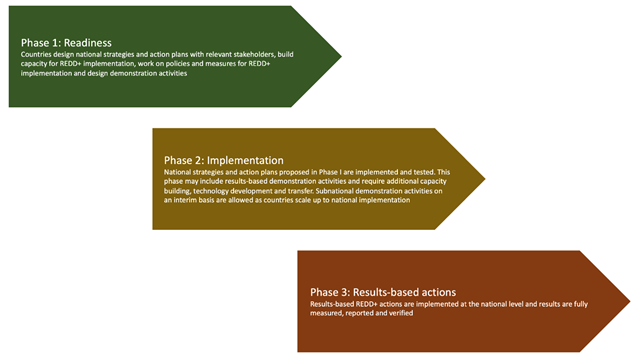
Figure 1: General REDD+ Readiness Steps with the Phased Approach to Readiness (adapted from [9]).
2.2 REDD+: Readiness requirements
To facilitate REDD+ implementation, technical (format and framework documents) and financial support are provided to interested developing countries by a third party organization, the World Bank, through the Forest Carbon Partnership Facility, and by the United Nations through its collaborative Program on REDD (referred to as UN-REDD) [10].
A community, as well as a NGO, a private sector enterprise, or a State/local government authorized by the host country can lead a REDD+ project through its readiness activities [11]. Developing nations adopting the program can successfully attain their objective by complying with the three-phase processes of Figure 1 [12]. Bernard et al. [12] submit that, in the strategy phase of REDD+, pilot projects can contribute significantly to the design of a national strategy by serving as a trial for all implementation needs. The strategy phase also determines the best way to structure and apply national REDD+ policies and the institutional framework.
REDD+ market and non-market-based incentives are built on the principle that, with more sustainable management of forests, GHG emissions produced by deforestation, forest degradation, and other land-use change can be reduced. The conference in 2010 at Cancun requested developing countries interested in REDD+ to put in place four key requirements essential to access result-based payments for every ton of GHG emission reduction/removal. They include a:
- National Strategy (NS) or Action Plan (AP), (1/CP.16, 15/CP.[13] )
- National Forest Monitoring System (NFMS), including measurement, Reporting, and Verification (MRV), (4/CP.15, 11/CP.[13] )
- Forest Reference Emission Level (FREL) or Forest Reference Levels (FRL) (4/CP.15, 12/CP.17, 13/CP.[13] ), and
- Safeguard Information System, that provides information on how safeguards for REDD+ are addressed and respected, (12/CP.17, 12/CP.[13] ) [9]
Each element has unique cross-cutting issues ranging from stakeholders’ engagement, gender considerations, multi-sectoral and multi-stakeholder processes, forest definition, scope and scale of action, and data methodologies [14].
3. Results
3.1 REDD+ in Nigeria
Nigeria is an emerging economy with a substantial, impoverished rural sector. It also has a global reputation for government and institutional corruption. These individual challenges are not unique amongst REDD+ implementation countries, but in combination they create a testing context for strong governance, social justice and the effective implementation of REDD+. Nigeria has historically had a high deforestation rate and, hence, has incentive to participate inREDD+. There has been a two-year ban on logging and an anti-deforestation Task Force has been established. Additionally, three pilot project sites have been proposed. After support from the World Bank, Nigeria became a UN-REDD partner and has several REDD+ related strategies inaction.
Globally, Nigeria finds itself among countries with the highest deforestation rates [1]. The United Nations Food and Agriculture Organization (FAO) submits that it lost 55.7% of its primary cover between 2000 and 2005 [15]. The estimate of the current rate of deforestation is 3.7% per annum, one of the fastest in the world. It is more prevalent in local communities in which trees are exploited for fuelwood, uncontrolled harvesting of timber occurs, and urbanization is encroaching [16]. From various studies, less than 10% of Nigeria’s native forest remains [17]. Well over 50% of the remaining total tropical high forest is found in CRS [17]. Given these statistics, REDD+ was initiated in 2008 in line with the communiqué from a national summit that sought to assess how forest resources in CRS could be used to generate public revenue [18]. That meeting sought ways of addressing the high level of deforestation in an area considered a vital biodiversity resource and a historical socio-ecological hotspot [1, 19].
The CRS REDD+ pilot activities started with the State government placing a two-year ban on logging and the institution of an anti-deforestation Task Force to enforce it; stopping revenue from timber exploitation to seek carbon finance for regeneration and conservation of forest; and initiating measures to benefit from the international carbon credit market [1]. These pioneering actions led to the adoption of a national and sub-national approach towards REDD+, yet only a national carbon accounting system is required for results-based payments [17]. Although an essential condition for approval of the REDD+ proposal is the emergence of multi-sector and multi-stakeholders’ consensus processes, Nigeria’s proposal was approved and funded just with evidence of mobilized interest groups [1].
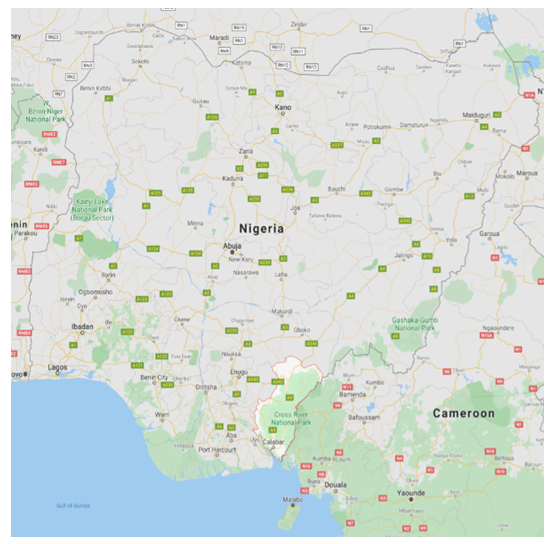
Figure 2: Territorial map of Nigeria.
Three pilot project sites were marked out in the REDD+ proposal covering approximately 202 hectares in five communities, and one State-reserved forest [17]. Figures 2 and 3 show a map of Nigeria, highlighting the location of CRS and, within it, that of the pilot projects.
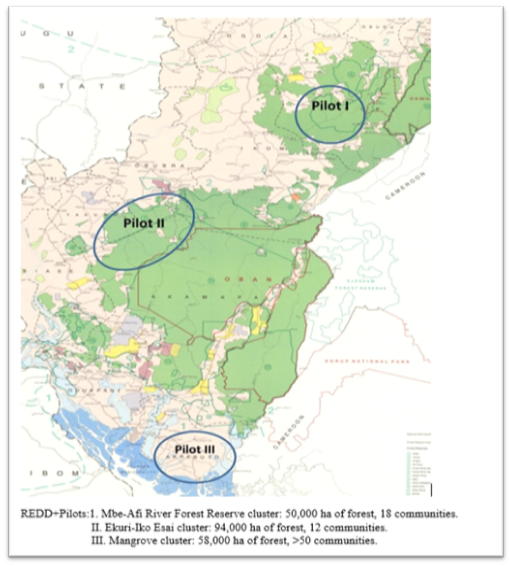
Figure 3: Map of Cross River State with pilot project locations [17].
In 2009, Nigeria sought support from the World Bank Forest Carbon Partnership Facility (FCPF). A year later, it became a partner country of the United Nations Collaborative Program on Reducing Emission from Deforestation and Forest Degradation (UN-REDD). In approaching Readiness for REDD+ in 2011, the nation prepared a Readiness Preparatory Proposal (R-PP) which provided a road map for assessing national deforestation and degradation status and an overview of how it intended to address these issues with CRS serving as a pilot/demonstration project [17]. A Nigerian UN-REDD collaborative program was approved in 2012, culminating in the development of a national REDD+ and a CRS REDD+ strategy [1]. The latter was intended to apprise the former and serve other States as a platform for learning/planning for REDD+ implementation [1, 18]. Figure 4 sets out the timeline of events for Nigeria’s REDD+.
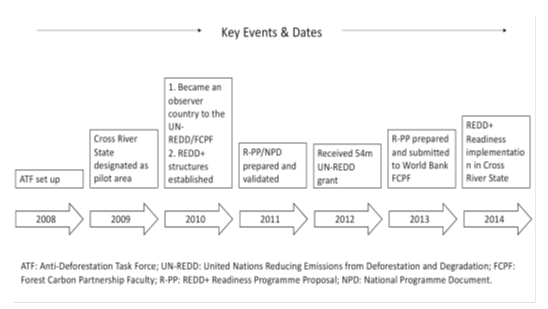
Figure 4: Timeline of Events in Nigeria REDD+ Program (adapted from Asiyanbi, Arhin [1].
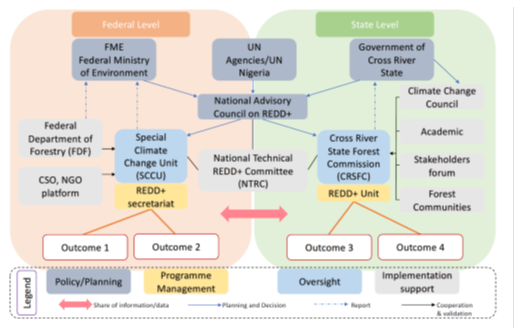
Figure 5: REDD+ Management Structure in Nigeria (adapted from 1) REDD+:
Figure 5 shows the Nigerian REDD+ management structure with its national and State-level components [18]. The National Advisory Council on REDD+ is the peak government body chaired by the Minister of Environment [17]. It comprises representatives from other relevant government agencies, civil society groups, NGOs, and stakeholders [18].
3.2 Divergence of practice in Nigeria
Although national circumstances are considered while instituting the four requirements of REDD+, success depends solely on how well they are met [3]. Decisions made on one have strong potential to affect others, and divergence from the 2010 Cancun Agreement general guideline has repercussions for the overall goal of the program [3]. The following subsections consider each of the requirements and the practice observed in Nigeria.
3.2.1 National REDD+ strategy action plan:
A national strategy that meets UNFCCC readiness needs is designed with full and active stakeholder participation and consultation [3]. The FCPF and UN-REDD have guidelines such as the Free Prior and Informed Consent on REDD+ implementation to ensure incorporation in an action plan [18]. A national REDD+ strategy should include a detailed assessment of land-use rights, policy, and governance in consultation with key stakeholders in the forest sector, and forest-dependent communities[14]. Studies have debated the credibility of the REDD+ strategy in Nigeria to meet its intended purpose, given its political nature, and the low participation and ‘inclusion-exclusion’ of key stakeholders in the review which led to its design [1]. Inclusion of vulnerable and marginalized voices, indigenous and forest-dependent community concerns and feedback in the design process are critical for sustainability [20].
Nuesiri [18] submits that REDD+ readiness is premised on an appropriate stakeholder mapping process. Active engagement in the design of a national forest strategy not only ensures sustainability but, from the outset, enables the program to identify and engage effectively with critical sectors and affected communities [21]. Asiyanbi [17] maintains that “the over-ambitious program outlined in Nigeria’s Readiness Preparatory Proposal (R-PP) likely contributed to a lack of focus on key elements required to achieve readiness.” He holds that stakeholder engagement for the design of the REDD+ strategy was too diffuse in clarifying the way forward, while contributions made by “symbolic” stakeholders were not cogent to defined strategic issues such as land-use/tenure rights, benefit distribution mechanisms, means to resolve conflict, and ways of managing the REDD+ funds [22]. Likewise, Williams [3] writes that, for a national or sub-national strategy of REDD+ to meet internationally agreed readiness needs, there should be an “effective participation/consultation process” that identifies crucial stakeholders, drivers of deforestation and how effectively to mitigate it in line with the program objective. A clear and secure right to land use and forest tenure should be established and agreed upon by all parties to ensure that stakeholders’ sources of livelihoods are not forcibly removed and alternative economic elements are also provided if community forest resources are to be acquired as part of REDD+ [21]. Important, too, is a consensual, equitable mechanism to share benefits [3].
3.2.2 National Forest Monitoring System: Monitoring, Reporting, and Verification (MRV):
The national forest and monitoring system, according to the UN-REDD, consists of forest and land use classification, the national forest inventory, a satellite land monitoring system, a GHG inventory, monitoring of REDD+ policies, measures and assessment of multiple benefit, and the establishment of a transparent forest information system database [23]. Most developing countries participating in REDD+, particularly those in Africa, suffer from considerable setbacks and have achieved only the implementation phase of REDD+ with scattered demonstration projects [24]. The lack of a productive forest monitoring system that reliably records emission reduction is identified as the primary underlying cause, since REDD+ payment is only possible when issues are quantified, reported, and verified [25]. Obtaining these data requires a national or sub-national forest reference emission level as a baseline for comparison [4].
Such a measure can also serve as a means for assessing country performance in the implementation of REDD+ and provide the basis for obtaining payments [24]. Given this situation, countries like Nigeria are yet to develop a national forest monitoring system that supports the functions of REDD+ following good-practice recommendations from the IPCC [26] and other guidelines [27]. The IPCC stipulates a range of quality standards which the monitoring should reflect. Since the reported emission reduction will be independently verified, they are expected to be accurate, reliable, and positioned to afford relevant and vital information [25].
There are no published accounts of the capabilities of Nigeria’s forest monitoring system prior to the decision by the national government to engage in a REDD+ Readiness program. Informal accounts by domestic foresters suggest that monitoring capacity was poor, certainly poorer than it is now after various forms of international support have been expended to improve skills and capacity for monitoring in the country. There does not seem to have been any formal, or at least published, gap analysis of capacity needs regarding forest monitoring. Some training, software and equipment were provided, mostly through the FAO, but we were unable to find any detailed published information. We infer that Nigeria’s capacity for forest monitoring was low and remains moderate by international standards. Capacity building seems to be an area in which action is needed if positive progress for REDD+ readinessis sought.
In Nigeria’s REDD+, although a phased framework for a national forest monitoring system was set up, insufficient inspection and reporting makes it difficult to predict the future behavior of, and interactions among, the many drivers of GHG emissions [28]. A partially developed Forest Reference Level and lack of reliable baseline render the comparison of monitored reduction (if any) impossibleover time.
3.2.3 Forest Reference Level (FRL)/Forest Reference Emission Level (FREL)
The FRL/FREL, according to Mertz et al. [25], is the “expected net carbon stock change expressed in tons of carbon dioxide per year in a baseline scenario without intervention.” It provides the marker for assessing reduced emissions from deforestation and degradation essential to show the effects of REDD+ [25]. While FREL includes only the emissions from deforestation and land degradation, FRL covers both emissions by source and removals by sinks; thus, it includes all enhancement of forest carbon stocks [25]. Establishing a benchmark with which monitoring of the reduction in GHG emission levels can be compared is critical to attaining the financial benefit of REDD+.
Attaining realistic FRL/FRELs is challenging because of inadequate data and uncertainty in data models [25]. Obtaining averages of historical net emissions is one of the ways FRL/FREL can be obtained [23]. However, the UNFCCC suggests that developing a national FRL/FREL should consider the national forest development transition:that is, such FRL/FREL measurement should account for the period in the country’s development intervening between high forest cover and low deforestation to high deforestation and low reforestation [23]. Progress reports of the Nigerian REDD+ show that the development of FRL/FREL is partial, since only historical averages of land cover can be obtained using remote sensing [25]. The reference level does not account for changes in known, or the emergence of future, drivers that would result in a substantial shift in land-use change and deforestation rates. It thus fails to meet the FRL/FREL concept of additionality for REDD+ payment [25]. Comparing measured emission reduction with a baseline that is not reliable and robust enough to consider progressive changes leaves a good deal of uncertainty about the future, and the legitimacy and effectiveness of REDD+ in Nigeria.
3.2.4 Safeguard Information System (SIS):
The Nigerian Ministry of Environment was responsible for formulating a SIS. Although many actors fear that the initiative could have unintended socio-economic outcomes on forest-dependent people and communities [21], the REDD+ framework suggests that strengthening local governance process could serve as a safeguard against a political élite’s taking the benefits from community people [7, 22]. SISs in REDD+ act substantially to identify non-carbon values of forests and see to their protection [29].
According to the UNFCCC (30), they aim to address environmental and social issues which include respect and protection of local indigenous communities, public participation, enhancement of social values and the maintenance of biodiversity, especially in areas where land tenure and resource rights are unresolved and disputed [29]. However, information on what makes an adequate safeguard, how to prioritize different values, and how to hold a country accountable if it fails to institute and implement a relevant measure was not provided in the REDD+ framework [31]. Given the circumstances that surround its adoption in Nigeria, where safeguards were seen as a burdensome community transaction cost [32], the National REDD+ strategy paid more attention to technical issues [18]. According to the UN-REDD National Program Report [33], there has been no safeguard information system that: takes into consideration national circumstances; provides transparent and consistent information accessible to all stakeholders; is updated regularly; and builds upon existing systems or is flexible enough to allow for improvement over time [29].
The CRS pilot projects appear to have had mixed outcomes. A key lesson was the need effectively to engage a broad group of stakeholders. At times, it appears that the pilot projects failedin this regard. Some local actors were involved, while some key stakeholders, such as local governments, were excluded. These local authorities were said to have been ‘godfathered’ and subjected to accusations of subordination by the national-level agencies involved. A key lesson from the pilots is that, for countries meaningfully to demonstrate that they have adopted the necessary elements of the Warsaw Framework and are ready for REDD+ payments, they must first effectively engage with stakeholders at all levels and through broad sectors.
4. Discussion
Nigeria’s circumstances formed the primary determinant of its mixed experience in REDD+. The governance structure, capacity, history of involvement in ecosystem service payments, and political will all influence choices, the decision-making process, and the overall viability of the program [34]. Aside from the over-ambitious and politically-driven motivation and the exclusion of local stakeholders, the primary barrier to effective implementation is the weak central forestry authority with few relevant powers [18]. Although the nation received approval and funding for its REDD+ Readiness strategy, it is likely to face a significant setback to operationalize projects nationally [21].
The inability of its REDD+ strategy to put in place the four essential requirements of the Warsaw Framework leaves much to worry about regarding the ability of the pilot program in CRS to meet its intended global goal and its subsequent expansion to other States [35]. With symbolic participation and the inclusion-exclusion of critical players in the forestry sector, the sustainability of the country-wide strategy is questionable [29, 36]. The inability of Nigeria to establish a national Forest Reference Level makes the chances and hope of getting REDD+ payment very slim [25].
Overall, Nigeria’s REDD+ strategy for engagement and readiness was arguably too ambitious. A lack of monitoring capacity, weaknesses in governance and a lack of genuine stakeholder engagement across sectors constrained implementation. To make positive progress, these factors need to be addressed and a slower, perhaps less ambitious strategy of implementation adopted.
To ensure that REDD+ achieves its intended goal and ensures equitable and transparent benefit-sharing, the following moves are recommended:
- The government should seek support for capacity building and hands-on practical support in implementing the requirements of the NFMS and MRV.
- REDD+ implementation should focus on overcoming the challenges of establishing a Forest Emission Reference Level for effective prediction of future forest-based carbon stocks.
- Safeguards and an MRV working group should be established to permit regular, cross-sector interaction to enhance participatory processes [3, 15, 34, 36-39].
5. Conclusion
The global goal of REDD+ can address climate change and, at the same time, tackle issues of poverty, biodiversity conservation, and sustaining essential ecosystem functions. All these outcomes are achievable in Nigeria, were it to focus primarily on mitigating climate change rather than seeking an avenue to generate public revenue from offshore funding agencies. Effective integration of the Warsaw Framework requirement will not only lead to respecting and protecting the rights and values of forest-dependent communities, but also ensure the sustainability of REDD+ in the country. Training and capacity building in appropriate technologies will increase the availability/reliability of data to create a national database for FRL/FREL to aid MRV and the effective payment of compensation.
6. Case Study Questions
What were the likely drivers of historically high rates of deforestation in Nigeria?
In 2010 at the UNFCCC COP in Cancun, developing countries interested in establishing REDD+ were asked to put in place which four key requirements in order to access result-based REDD+ payments?
Whichsteps has Nigeria taken to establish a Forest Reference Emissions Level for potential REDD+ projects inside its borders?
Whichfactors do you think constrain the effective implementation of REDD+ in Nigeria?
Acknowledgment
We thank Ms. Amanda Hansson from the School of Earth and Environmental Science, Faculty of Science, The University of Queensland, Brisbane, Australia for her continuous support and guidance.
Funding
This case study would not have been possible without the Awards Scholarship for African Students offered by the Australian Department of Foreign Affairs and Trade (DFAT) for Masters Studies at The University of Queensland.
Competing Interest
There have been no competing interests in setting out the findings in this case study.
References
- Asiyanbi AP, Arhin AA, Isyaku U. REDD+ in West Africa: Politics of design and implementation in Ghana and Nigeria. Forests 8 (2017): 1-24.
- Saeed AR, McDermott C, Boyd E. Are REDD+ community forest projects following the principles for collective action, as proposed by Ostrom? International Journal of the Commons 11 (2017): 572-596.
- Williams LG. Putting the Pieces Together for Good Governance of REDD+: An Analysis of 32 REDD+ Country Readiness Proposals. World Resources Institute (WRI), Washington DC, USA (2013).
- United Nation Framework Conventions on Climate Change (UNFCCC). The Cancun Agreements: Outcome of the Work of the Ad Hoc Working Group on Long-Term Cooperative Action under the Convention. Cancun, Mexico (2010).
- Ernesto RN. REDD+ as a tool of global forest governance. Intl Spectator 50 (2015): 60-73.
- van der Werf GR, Morton DC, DeFries RS, et al. CO2 emission from forest loss. Nat Geosc 2 (2009): 737-738.
- Intergovernmental Panel on Climate Change (IPCC). IPCC Fourth Assessment Report. Cambridge, UK: Cambridge University Press (2007).
- Forest Carbon Partnership Facility (FCPF). REDD+ Country Participants.
- Maniatis D, Todd K, Scriven J, et al. Towards a common understanding of REDD+ under the UNFCCC: A UN-REDD Programme document to foster a common approach of REDD+ implementation (2016).
- Dulal HB, Shah KU, Sapkota C. Reducing emissions from deforestation and forest degradation (REDD) projects: lessons for future policy design and implementation. Intl J. Sustain Devel and World Ecol 19 (2012): 116-129.
- Angelsen A, Streck C, Peskett L, et al. What is the right scale for REDD? Moving ahead with REDD: Bogor: CIFOR (2008): 31-40.
- Bernard F, Minang PA, Adkins B, et al. REDD+ projects and national-level Readiness processes: a case study from Kenya. Clim Pol 14 (2014): 788-800.
- Federal Government of Nigeria. Nigeria REDD+ Readiness Preparation Proposal (R-PP) submitted to Forest Carbon Partnership Facility (FCPF) and the United Nations collaborative program on reducing emission from deforetstation and forest degradation in developing countries (UN-REDD). Ajuba: Federal Ministry of Environment (2013).
- UN-REDD. REDD+ Readiness: An Introduction: UN-REDD.
- Food and Agricultural Organisation of the United Nations. Land Tenure and Rural Development. Rome: FAO (2002).
- Andoh J, Lee Y. National REDD+ strategy for climate change mitigation: a review and comparison of developing countries. Sustainability 10 (2018): 1-17.
- Asiyanbi AP. A political ecology of REDD+: property rights, militarised protectionism, and carbonised exclusion in Cross River. Geoforum 77 (2016): 146-56.
- Nuesiri EO. Godfather politics and exclusionary local representation in REDD+: a case study of the design of the UN-REDD-supervised Nigeria-REDD proposal. In Global Forest Governance and Climate Change: Interrogating Representation, Participation, and Decentralization.EO Nuesiri (ed). Cham: Palgrave Macmillan (2018): 17-49.
- Norman M, Russell AM, Cristina GM, et Biodiversity hotspots for conservation priorities. Nature 403 (2000): 853.
- Bodin B, VäänänenE, van Assselt H. Putting REDD+ environmental safeguards into practice: recommendations for effective and country-specific implementation. Carbon Clim Law Rev 9 (2015): 168-182.
- Nuesiri E. Feigning democracy: performing representation in the UN-REDD funded Nigeria-REDD programme. Conserv.Soc 15 (2017): 384-399.
- Rayner J, Buck A, Katila P (eds.). Embracing Complexity: Meeting the Challenges of International Forest Governance: A Global Assessment Report. Prepared by the Global Forest Expert Panel of the International Forest Regime. Vienna: IUFRO World Series (2010).
- UN-REDD. National Forest Monitoring Systems for REDD+ and Forest Reference Emission Levels/Forest Reference Levels (FREL/FRL) UN-REDD.
- Gizachew B, Duguma L. Forest carbon monitoring and reporting for REDD+: what future for Africa? Env Mgmt 58 (2016): 922-930.
- Mertz O, Grogan K, Pflugmacher D, et al. Uncertainty in establishing forest reference levels and predicting future forest-based carbon stocks for REDD+. J Land Use Sci 13 (2018):1-15.
- Intergovernmental Panel on Climate Change (IPCC). Good Practice Guidance for Land Use, Land-use change, and Forestry. Kanagawa: Institute for Global Environmental Strategies (2003).
- Intergovernmental Panel on Climate Change (IPCC). Guidelines for national Greenhouse Gas Inventories. Agriculture, Forestry, and Other Land-Use. Kanagawa: Institute for Global Environmental Strategies 4 (2006).
- Hosonuma N, Herold M, de Sy V, et al. An assessment of deforestation and forest degradation drivers in developing countries. Env Res Letters 7 (2012): 044009.
- McDermott CL, Coad L, Helfgott A, Schroeder H.Operationalizing social safeguards in REDD+: actors, interests, and ideas. Env SciPol 21 (2012): 63-72.
- United Nation Framework Convention on Climate Change (UNFCCC). The Cancun Agreements Dec 1/CP.16 (2011).
- Roe S, Streck C, Pritchard L, et al. Safeguards in REDD+ and forest carbon standards: a review of social, environmental and procedural concepts and application. Amsterdam: Climate Focus BV (2013).
- Alston LJ, Andersson K. Reducing greenhouse gas emissions by forest protection: the transaction costs of implementing REDD. Clim Law 2 (2011): 281-289.
- UN-REDD. UN collaborative program on reducing emissions from deforestation and forest degradation in developing countries national program document: Nigeria REDD+ Readiness Programme 2012 -2015, Federal Republic of Nigeria (2015).
- Minang PA, Van Noordwijk M, Duguma LA, et al. REDD+ Readiness progress across countries: time for reconsideration. Clim Pol 14 (2014): 685-708.
- Robiglio V, Armas AD, Silva Aguad C, et al. Beyond REDD+ readiness: land-use governance to reduce deforestation in Peru. Clim Pol 14 (2014): 734-747.
- Peskett L, Brockhaus M. When REDD+ goes national: a review of realities, opportunities, and challenges. In Angelsen A, Brockhaus M, Kanninen M et al.Realising REDD+: National Strategy and Policy Options. 25-44. Bogor, Indonesia: Center for International Forestry Research (CIFOR) (2009).
- Isyaku U, Arhin A, Asiyanbi A. Framing justice in REDD+ governance: centering transparency, equity, and legitimacy in readiness implementation in West Africa. Env Conserv 44 (2017): 212-220.
- Minang P, van Noordwijk M. Design challenges for achieving reduced emissions from deforestation and forest degradation through conservation: Leveraging multiple paradigms at the tropical forest margins. Land Use Pol 31 (2013): 61-70.
- Oyebo M, Bisong F, Morakinyo T. A Preliminary Assessment of the Context for REDD in Nigeria. Nigeria: Federal Ministry of Environment, the Cross River State's Forestry Commission and UNDP Nigeria (2010).


 Impact Factor: * 3.6
Impact Factor: * 3.6 CiteScore: 2.9
CiteScore: 2.9  Acceptance Rate: 11.01%
Acceptance Rate: 11.01%  Time to first decision: 10.4 days
Time to first decision: 10.4 days  Time from article received to acceptance: 2-3 weeks
Time from article received to acceptance: 2-3 weeks 